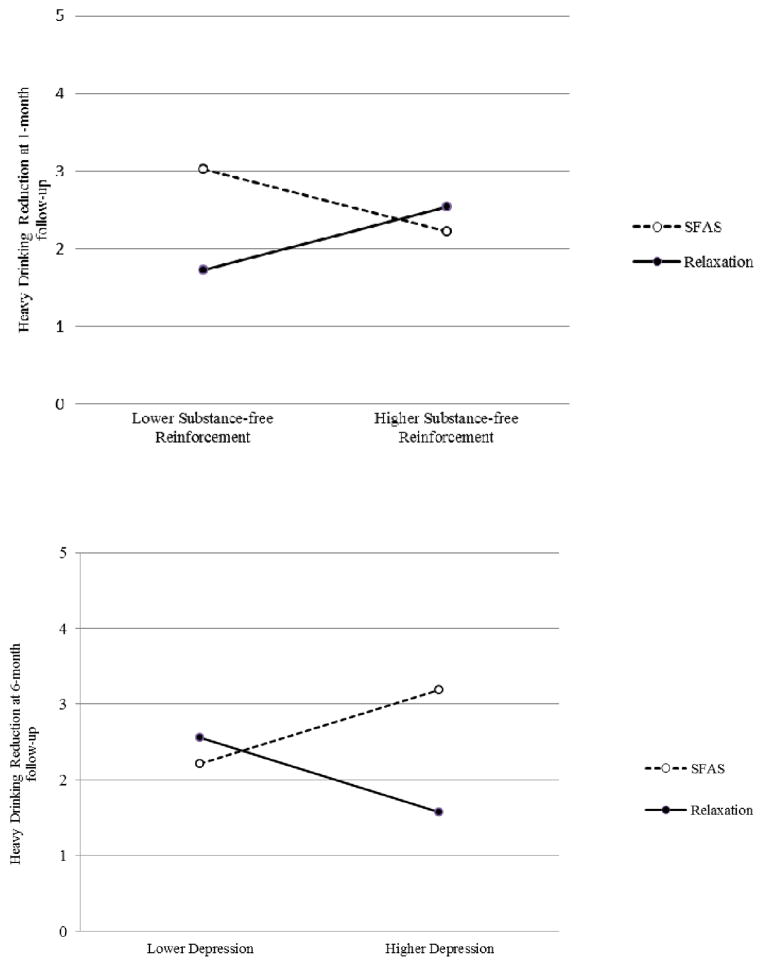Figure 3.
The upper panel shows estimated heavy drinking reductions by condition at the one-month follow-up for students with high (+ 1 SD) versus low (− 1 SD) levels of substance-free reinforcement. Students with low substance-free reinforcement assigned to the SFAS reported significantly less heavy drinking at the one-month follow-up. The lower panel shows estimated heavy drinking reductions by condition for students with high (+ 1 SD) versus low (− 1 SD) levels of depression at the six-month follow-up. Students with elevated depression assigned to the SFAS reported significantly less heavy drinking at the six-month follow-up. Participants reported an average of 6.01 (SD = 4.13) heavy drinking episodes at baseline and there were no significant differences as a function of substance-free reinforcement or depression level.

